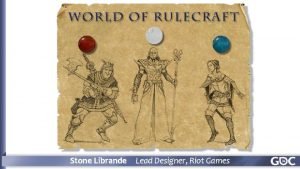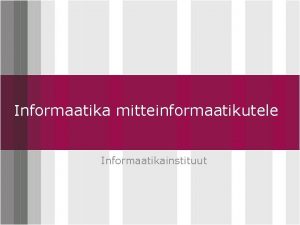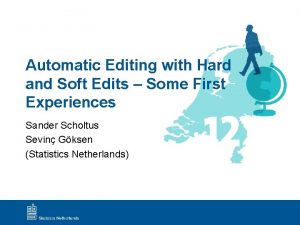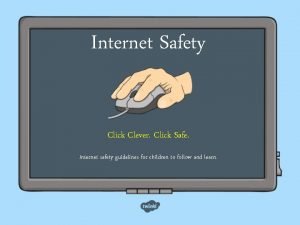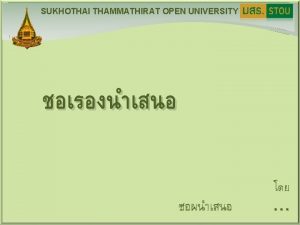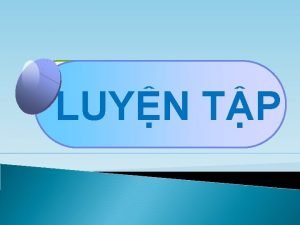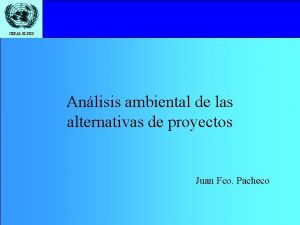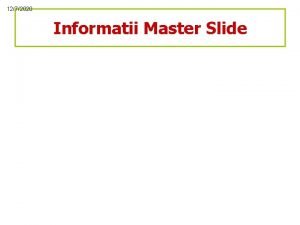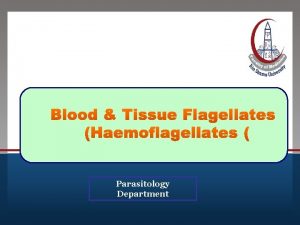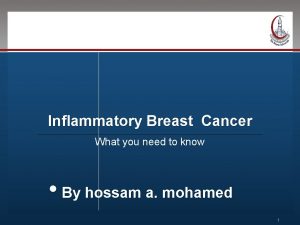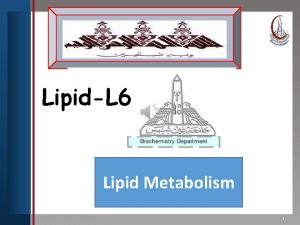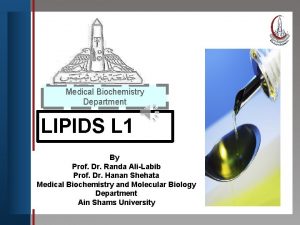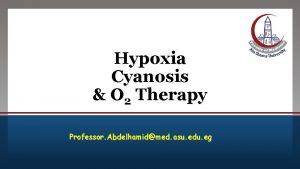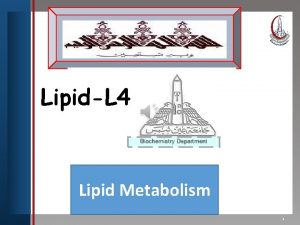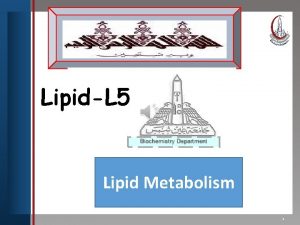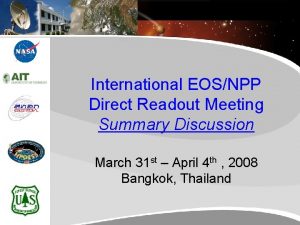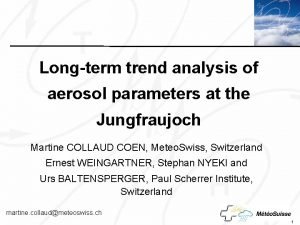Click to edit Master title style Click to

















- Slides: 17

Click to edit Master title style • Click to edit Master text styles GEANT Operational Challenges • Second level Coping • without Third level WAN-PHY • Fourth level & Using BFD • Fifth level Tony Barber Head of GÉANT Operations Centre & CERT www. geant. org 1 18/06/2020 www. geant. org 1

WAN PHY Standard – 10 GBase-W • At the time that the 10 Gigabit Ethernet standard was developed, interest in 10 Gb. E as a wide area network (WAN) transport led to the introduction of a WAN PHY for 10 Gb. E. The WAN PHY encapsulates Ethernet packets in SONET OC-192 c frames and operates at a slightly slower data-rate (9. 95328 Gbit/s) than the local area network (LAN) PHY. • The WAN PHY uses the same 10 GBASE-S, 10 GBASE-L and 10 GBASE-E optical PMDs as the LAN PHYs and is designated as 10 GBASE-SW, 10 GBASE-LW or 10 GBASE-EW. Its 64 b/66 b PCS is defined in IEEE 802. 3 Clause 49 and its PMD sublayers in Clauses 52. It also uses a WAN Interface Sublayer (WIS) defined in Clause 50 which adds extra encapsulation to format the frame data to be compatible with SONET STS-192 c. [22] • The WAN PHY was designed to interoperate with OC-192/STM 64 SDH/SONET equipment using a light-weight SDH/SONET frame running at 9. 953 Gbit/s. 2 www. geant. org

WAN-PHY in GÉANT • WANPHY used extensively on PARTNER 10 G links • WANPHY used on all backbone links until recently • Why WANPHY ? • Troubleshooting/ALS 3 www. geant. org

Engineers Like WAN PHY for troubleshooting • AIS etc • End to end path trace • Offers WAN type framing (SDH/SONET) with Ethernet characteristics that modern engineers are familiar with • End-to-end visibility not seen in LAN-PHY • LAN-PHY interface: monitoring relies on upper layer protocols 4

Moving Forward • What is Happening? • Increased use of 100 G in NREN and core links • DCI solutions not compatible with WAN-PHY • 400 G interfaces around the corner • WAN-PHY not supported beyond 10 G (OC 192/STM 64 rates) • Juniper MX 204 does not support WAN-PHY interfaces 5

What about Monitoring? • Why is WAN-PHY good for NMS ? • End to end visibility • SNMP traps based solutions such as GEANT uses GEANT RTR OK NTU X End to End Data flow Broken GEANT NMS 6 CUSTOMER

Mitigation? • ICMP monitor – Not currently part of GEANT core NMS • Upper protocol monitoring – Partly integrated into GEANT NMS where appropriate • LAG (LACP) minimum links • BFD…Bidirectional Forwarding Detection 7

How is GEANT managing DCI links in the core GNT Router DCI 3 x 100 G OPTICAL TXPNDR GNT Router DCI Fibre 3 x 100 G • Minimum links = 3 • One failure results in LACP channel showing DOWN – SNMP Trap generated • Adequate bandwidth in core to cope, G 30 very reliable 8

GEANT Reference Topology 2020+ • WARNING – Reference design is NOT finalised by NRENs 9 9

BFD in GEANT • Evolution: 1. ISIS BFD 2. Family BFD (IPv 4 and IPv 6) 3. LACP based micro. BFD (where we are now) – RFC 7130 • Monitors each LAG component 10

BFD in GEANT 11

BFD in GEANT • NTE or not, LACP ensures end-to-end forwarding on the link at layer 2, with failure interval of ~3 sec. - This covers most failure scenarios. LACP has its own component detection (GEANT set at 1 s), BUT… • u. BFD sitting on top of this ensures end-to-end forwarding on the link at layer 4, with failure interval 300 ms • u. BFD pulls down the link if LACP does not • GEANT is extensively configured for LACP even with single physical links • Backbone – u. BFD standardised everywhere. 12

NOTE – Firewalls – UDP port required • set firewall family inet filter ROUTER_access term u. BFD_accept from source-prefix-list geant-address-space • set firewall family inet filter ROUTER_access term u. BFD_accept from protocol udp • set firewall family inet filter ROUTER_access term u. BFD_accept from port 6784 • set firewall family inet filter ROUTER_access term u. BFD_accept then accept • insert firewall family inet filter ROUTER_access term u. BFD_accept after term BFD_accept 13

BFD with NREN links • NOT currently standard • Some NRENs have requested it at BGP level 14

BFD with NRENs • Always receiving BGP down traps • But maybe not always Interface traps • Most NREN links are direct patch connections meaning there is no problem as there would be no link carrier • BGP BFD is not the answer where multiple LAG components exist • Non BGP links with GEANT where NTUs exist – greatest risk here • GEANT may use BFD with NRENs under some circumstances to support link monitoring • Discuss ? • ICMP based reachability augmentation ? • What about interoperability issues ? • Likely better at BGP protocol level 15

OAM/CFM • In place in GEANT backbone • Little used by engineers though as other tools suffice • But, due to deployment capabilities this is unlikely to happen 16

Click to edit Master title style • Click to edit Master text styles • Second level • Third level Thank you • Fourth level Any questions? • Fifth level www. geant. org 17 18/06/2020 © GÉANT Association on behalf of the GN 4 Phase 2 project (GN 4 -2). The research leading to these results has received funding from the European Union’s Horizon 2020 research and innovation programme under Grant Agreement No. 731122 (GN 4 -2). www. geant. org 17
 Click to edit master title style
Click to edit master title style Click to edit master title style
Click to edit master title style Click to edit master title style
Click to edit master title style Informaatika mitteinformaatikutele
Informaatika mitteinformaatikutele Hard edit vs soft edit
Hard edit vs soft edit Master title style
Master title style Master title style
Master title style Clever click
Clever click Click clever click safe
Click clever click safe Internet safety
Internet safety Click clever click safe
Click clever click safe Click to add title ne demek
Click to add title ne demek Click to add title
Click to add title Click to add title
Click to add title Master title
Master title Didaskolos
Didaskolos What is a slide-title master pair
What is a slide-title master pair Title title
Title title

